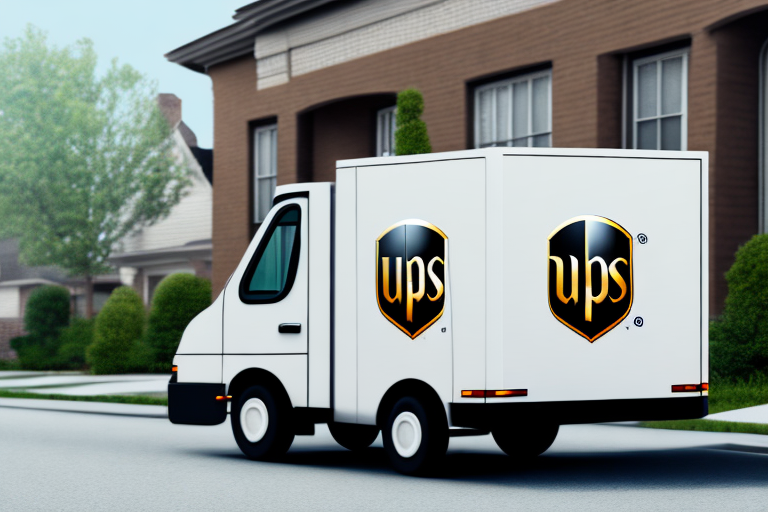Does UPS Require a Signature?
When shipping with UPS, whether a signature is required upon delivery can be a crucial consideration for both senders and recipients. The necessity of a signature depends on several factors, including the type of delivery service chosen, the value of the package, and specific delivery circumstances. This comprehensive guide explores UPS's delivery policies, various delivery options, signature requirements, tracking methods, and offers practical tips to ensure a smooth delivery experience.
Understanding UPS Delivery Policies
UPS provides a range of delivery services tailored to different needs, ensuring that packages are delivered efficiently and securely. Here's an overview of UPS's basic delivery policies:
- Choose from multiple delivery options based on urgency and destination.
- Utilize UPS's robust tracking system to monitor package status in real-time.
- Adhere to UPS's packaging guidelines to ensure safe transit of packages.
- Take advantage of additional services like Saturday delivery and international shipping.
UPS's commitment to reliable delivery is supported by measures such as estimated delivery dates, which account for factors like destination and shipping method, while also adapting to unforeseen circumstances like adverse weather conditions.
UPS Delivery Options
UPS offers a variety of delivery options to cater to different shipping needs. The most common options include:
- UPS Ground: Ideal for non-urgent deliveries, typically taking up to five business days depending on the distance.
- UPS 3 Day Select: Provides delivery within three business days, suitable for time-sensitive shipments.
- UPS 2nd Day Air: Guarantees delivery by the end of the second business day.
- UPS Next Day Air Saver: Ensures next-business-day delivery, ideal for urgent parcels.
- UPS Worldwide Express: Facilitates international shipping with delivery in one to three business days to over 220 countries.
- UPS My Choice: Allows recipients to customize delivery preferences, including rescheduling or redirecting packages.
For a detailed comparison of UPS delivery services, refer to UPS's official Delivery Services page.
UPS Signature Requirements
Understanding when UPS requires a signature can help you manage your deliveries more effectively. Generally, UPS requires a signature to confirm that the package has been received by the intended recipient. However, specific circumstances can alter this requirement.
Residential Deliveries
For deliveries to residential addresses, a signature is typically required if the sender has specified a shipped service that mandates one, or if the UPS driver deems it necessary to leave the package unattended. In cases where a signature is required and no one is available to sign for the package, UPS will make up to three delivery attempts before returning the package to the sender.
Commercial Deliveries
Deliveries to commercial addresses usually require a signature. However, if the package is being delivered to a secure location within the building, such as a mailroom or reception area, a signature might not be necessary.
Exceptions to Signature Requirements
There are several exceptions where a signature may not be required:
- UPS Access Point: Packages delivered to UPS Access Point locations typically don't require a signature.
- UPS My Choice: Recipients can authorize UPS to leave packages without a signature via the UPS My Choice program.
- International Deliveries: Depending on the destination country's customs regulations, a signature may be required for certain shipments.
Reasons Behind UPS Signature Requirements
UPS may require a signature to ensure that the package is delivered to the correct recipient, reducing the risk of loss or theft. Signatures are particularly important for high-value or sensitive shipments, as they provide proof of delivery and protect both the sender and the recipient.
Additionally, certain items, such as alcohol or tobacco, are subject to regulatory requirements that mandate a signature to verify the recipient's age and identity, ensuring compliance with legal standards.
Tracking Your UPS Package
UPS offers robust tracking options to monitor the status of your package in real-time. You can track your package using:
- The UPS Tracking website.
- The UPS mobile app, available for both iOS and Android devices.
- Signing up for email or text notifications to receive updates on your package's progress.
These tools allow you to stay informed about your package's location and estimated delivery time, enabling you to plan accordingly.
If You’re Not Home to Sign for Your UPS Package
If no one is available to sign for your package, the UPS driver will leave a delivery notice with instructions for rescheduling the delivery or arranging for pickup at a nearby UPS location. Additionally, if you have access through UPS My Choice, you can specify an alternate delivery time or location to ensure successful delivery.
For more information on handling missed deliveries, visit UPS Delivery Options.
Electronic Signatures and Contactless Delivery
UPS offers electronic signature options through the UPS My Choice program, allowing recipients to provide a digital signature and facilitating contactless deliveries. This feature enhances convenience, especially in situations where physical signatures aren't feasible.
Tips for Successful UPS Deliveries
- Provide Accurate Address Information: Ensure that your shipping address is complete and correct to avoid delivery delays.
- Use Tracking Tools: Regularly monitor your package's status to stay informed about its progress.
- Be Available at Delivery Time: Arrange to be home or designate someone to receive the package in your absence.
- Authorize Signature-Free Delivery: If suitable, use the UPS My Choice service to allow packages to be left without a signature.
UPS vs. Other Shipping Carriers: Signature Requirements Comparison
Comparing UPS with other major carriers like FedEx and USPS, all generally require signatures for high-value or sensitive packages. However, the specific policies and options available may vary. For example:
- FedEx: Offers similar signature requirements, with options like adult signatures for high-value items.
- USPS: Provides services like Signature Confirmation and Certified Mail for secure deliveries.
It's advisable to review each carrier's signature policies to choose the best service that meets your delivery needs.
Frequently Asked Questions About UPS Signatures
- Q: Can I authorize UPS to leave a package without a signature?
A: Yes, through the UPS My Choice program, you can permit UPS to leave your package without requiring a signature. - Q: What should I do if I miss a UPS delivery?
A: Follow the instructions on the delivery notice left by UPS to reschedule the delivery or arrange for package pickup. - Q: Does UPS require a signature for all deliveries?
A: No, signature requirements depend on the service selected, the package's value, and specific delivery circumstances.
Conclusion
Understanding UPS's signature requirements and delivery policies is essential for ensuring a smooth and secure shipping experience. By selecting the appropriate delivery options, utilizing tracking tools, and following best practices, you can manage your UPS shipments effectively and minimize delivery challenges.






















